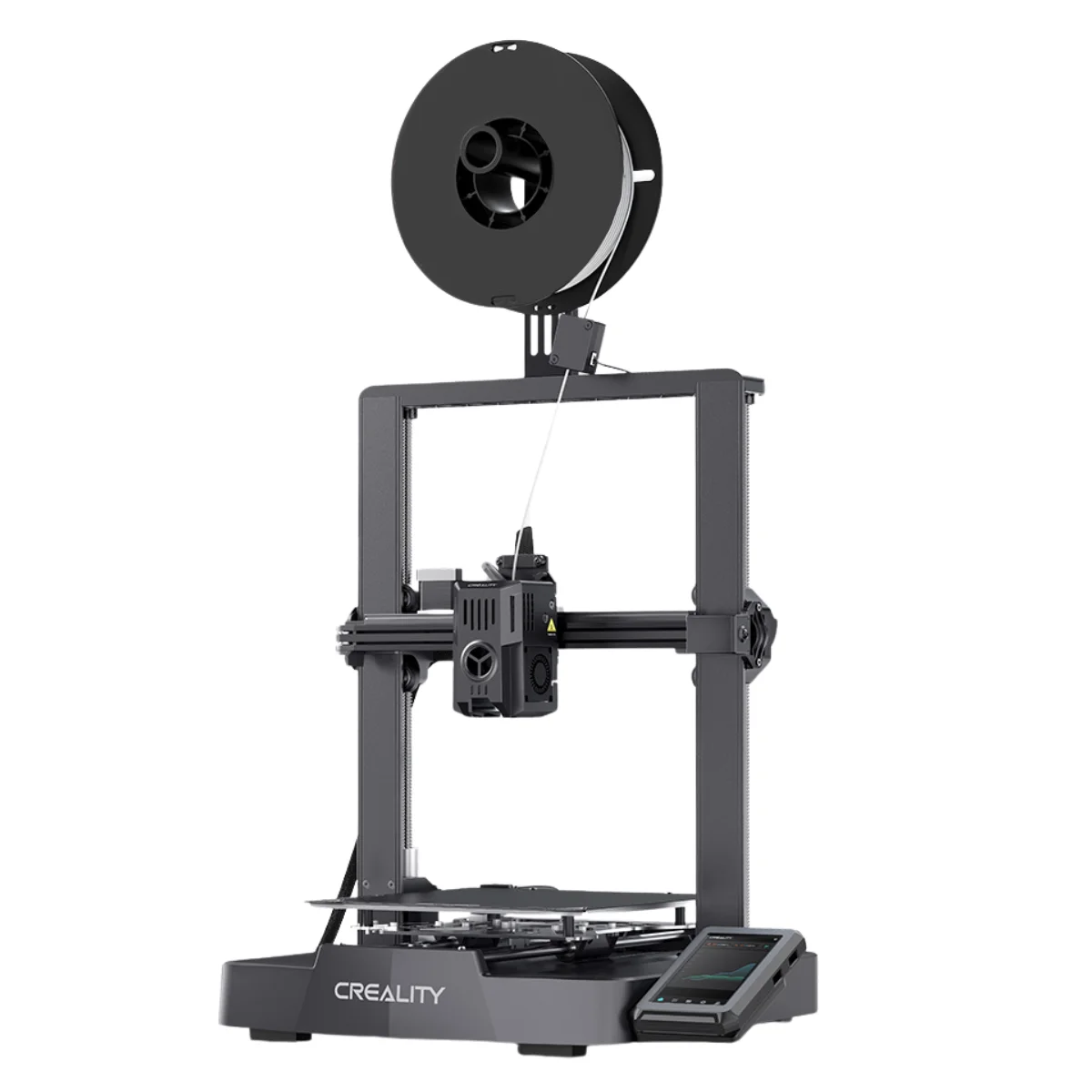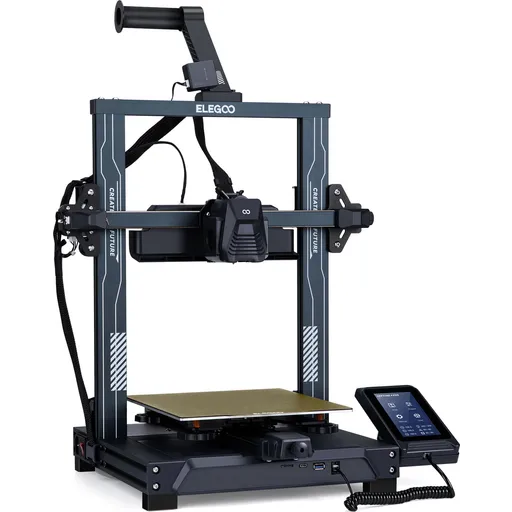Compare Ender 3 V3 KE vs Neptune 4 PRO
Comparison between the best 3D printers
Choose the best 3D printer at the best price. The cheapest 3D printers are here.
Buy a 3D printer here with 3D Fila.
 |
 |
|
| Model | Ender 3 V3 KE[BUY Ender 3 V3 KE] |
Neptune 4 PRO |
| Printing Material | Filament | Filament |
| Buy Filament for Creality Ender 3 V3 KE | Buy Filament forElegoo Neptune 4 PRO | |
| Estimated price | $279,00 | $359,00 |
| Manufacturer | Creality | Elegoo |
| Release Year | 2023 | 2023 |
| Print Volume [mm] | 220x220x240 | 225x225x265 |
| Printer Size [mm] | 433x366x490 | 475x445x515 |
| Weight [kg] | 7,8 | 8,9 |
| Power Loss Recovery | YES | YES |
| Enclosed printer | NO | NO |
| Bed Leveling | Automatic | Automatic |
| Filament End Sensor | YES | YES |
| Bed type | Heated | Heated |
| Power supply system | Direct Drive | Direct Drive |
| Standard nozzle | 0,4 | 0,4 |
| Maximum Nozzle Temperature [°C] | 300 | 300 |
| Maximum Bed Temperature [°C] | 100 | 110 |
| Maximum printing speed [mm/s] | 500 | 500 |
| Filament holder | YES | YES |
| Camera for supervision | NO | NO |
| Recommended filaments | PLA, PETG e TPU (95A+), ASA | PLA, PLA+, TPU, PETG, Nylon, ABS |
| Recommended slicers | Creality Print, Cura 5.0 ou superior, Prusa Slicer, Orca | Bambu Studio, Super Slicer, Cura, Prusa Slicer, Orca |
| Maximum Resolution [mm] | 0,1 | 0,1 |
| Processor | 32-bit Silenciosa | ARM 64 bit |
| Display | Touchscreen 4,3'' | Touchscreen 4,3'' |
| Power Supply | 350 W | 310 W |
| Connectivity | USB drive, LAN, Creality Cloud APP | USB, microSD |
| Operating systems | Windows, Linux, Macbook | Windows, Linux, Macbook |
| Date of registration in the system | 2024-03-06 | 2024-07-02 |
| Release date | 2023 | 2023 |
| Extra features | The Ender 3 V3 KE, an advancement in the Ender line, achieves print speeds of up to 500mm/s with its touchscreen and WiFi connectivity. Although it has a slightly smaller print area than the SE model, it makes up for it with superior print quality. Its robust design, high-quality components, and intuitive wireless control are appreciated, although Creality's mobile app lacks practicality and does not have a closed system. It stands out for its linear track on the X-axis for stability at high speeds and the hotend that supports up to 300°C, ideal for high-temperature filaments. | The Elegoo Neptune 4 Pro stands out for its advanced features, including pre-installed Klipper firmware, a dual-gear direct extruder with a 5.2:1 ratio, a high-temperature nozzle (up to 300°C), a flexible magnetic PEI platform, efficient cooling fans, and a 121-point auto-leveling system. The printer also features a 4.3-inch touchscreen interface, dual linear bars on the X and Y axes, and a segmented heated bed for energy savings. |
| Support for multiple colors and materials (AMS and CFS) | NO | NO |
Notes * |
||
| Cost-benefit | 7 / 10 | 7 / 10 |
| Hardware | 3.2 / 10 | 3.2 / 10 |
| Tela | . | . |
| Print volume | 3 / 10 | 3 / 10 |
| Performance | 4 / 10 | 4 / 10 |
| [BUY Ender 3 V3 KE] |
Conclusion |
| In conclusion, both the Creality Ender 3 V3 KE and the Elegoo Neptune 4 PRO are impressive 3D printers that cater to enthusiasts and professionals alike, each with its own unique offerings. The Ender 3 V3 KE shines with its cost-effectiveness, achieving high print speeds while maintaining print quality, and is well-suited for users seeking reliable performance without breaking the bank. Its robust design, intuitive wireless control, and support for high-temperature filaments make it a solid choice for a variety of projects. On the other hand, the Neptune 4 PRO, while at a higher price point, introduces advanced features such as pre-installed Klipper firmware, superior auto-leveling capabilities, and a flexible magnetic platform, appealing to users who prioritize cutting-edge technology and versatility in filament use. Its comprehensive support for multiple materials enhances its functionality, making it a great option for users looking to explore diverse printing possibilities. Ultimately, the best choice depends on individual priorities: if budget is a primary concern with a need for speed and quality, the Ender 3 V3 KE may be more suitable. Conversely, if advanced features and greater material compatibility are essential, investing in the Neptune 4 PRO could prove beneficial. Both models display commendable cost-benefit ratios, making either a worthy addition to a 3D printing arsenal. |

